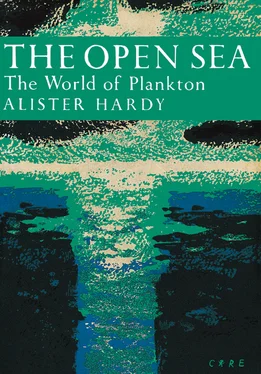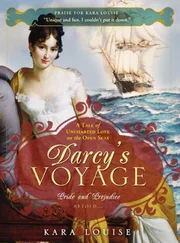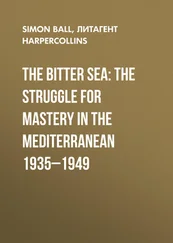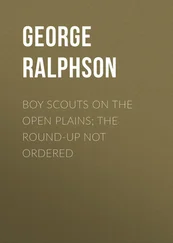Where then in the sea, we may ask ourselves, are all the plants upon which the hordes of animals must depend? They cannot grow in the darkness or dim light of the sea-floor, and the seaweeds, forming but a shallow fringe along the coasts, are of no real importance in the economy of the open sea. From the deck of a ship, or even from a rowing boat, we can see no plant-life floating near the surface; yet we know it must be there. Another little flight of imagination will, I think, help us to get some idea of the extent of this elusive vegetation.
Let us suppose for a moment that the herring is not a fish, but a land animal. We know that some three thousand million herring are landed every year at ports in the British Isles; these, together with all those landed in other countries, must be only a small fraction of their total number, for we also know that herring are the food of so many other abundant animals of the sea. For simplicity let us consider them to be feeding directly upon plants—and let us imagine them in their unnumbered millions sweeping across the continent. If we do this it needs no imagination to see that the countryside would be stripped of vegetation as if by locusts. Now let us think of the other fish in the sea besides the herring: the cod, haddock, plaice, skate and such that fill our trawlers (as distinct from the herring-drifters) to the extent of more than a million tons a year; then also think of the crowded invertebrate life of the sea-bottom. If all these animals were on the land as well, what an immense crop of plants it would take to keep them supplied with food! There are indeed such luxuriant pastures in the sea but they are not obvious because the individual plants composing them are so small as to be invisible to the unaided eye; we can only see them through a microscope. Their vast numbers make up for their small size.
As an introduction to all that follows let us consider the natural economy of the sea in its simplest terms. We have the sun shining down, its rays penetrating the upper layers of the water; we have the gases, oxygen and carbon dioxide, dissolved in it from the atmosphere; we have also the various mineral salts—notably phosphates and nitrates and iron compounds—continually being brought in by the erosion of the land, and there are minute traces of some essential vitamin-like substances. These are ideal conditions for plant growth. Just as these are spread through the water, so is the plant life itself scattered as a fine aquatic ‘dust’ of living microscopic specks in untold billions. In a shaft of sunlight slanting into a shaded room we have all watched the usually invisible motes floating in the air, floating because they are so small and light; these tiny plants remain suspended in the water in just the same way. Many of them are provided with fine projections like those of thistledown to assist in their suspension.
Feeding upon these tiny floating plants, and also like them scattered through the sea in teeming millions, are little animals. Crustacea, little shrimp-like creatures of many different kinds, predominate; mostly they range in size from a pin’s head to a grain of rice, but some are larger. There are hosts of other animals as well: small worm-like forms, miniature snails with flapping fins to keep them up, little jellyfish, and many other kinds which surprise us with their unexpected shapes and delicate beauty when first we see them through the microscope.
All these creatures, both animals and plants, which float and drift with the flow of tides and ocean currents are called by the general name of plankton. It is one of the most expressive technical terms used in science and is taken directly from the Greek πλavktov . It is often translated as if it meant just ‘wandering’, but really the Greek is more subtle than this and tells us in one word what we in English have to say in several; it has a distinctly passive sense meaning ‘ that which is made to wander or drift ’ i.e. drifting beyond its own control—unable to stop if it wanted to. It is most useful to have one word to distinguish all this passively drifting life from the creatures such as fish and whales which are strong enough to swim and migrate at will through the moving waters: these in contrast are spoken of as the nekton (Gk nektos , swimming). Actually when they are very young, the baby fish are strictly speaking part of the plankton too, for they are also carried along at the mercy of the currents until they are strong enough to swim against them. Photographs taken through a microscope of some typical planktonic plants and animals are shown in Plate Iand Plate II; they have been caught by drawing a net of fine silk gauze through the water. Their natural history will be dealt with in later chapters.
The simple sketch in Fig. 1shows this general economy of the sea in diagram form. A number of fish, including the herring, pilchard, sprat, mackerel and the huge basking shark, feed directly upon the little plankton animals; and so also, curiously enough, do the great whalebone whales, the largest animals that have ever lived. From this world of planktonic life, dead and dying remains are continually sinking towards the bottom and on the way may feed other plankton animals living in the deeper layers. For this reason the zoöplankton (animal plankton—Gk zoön , an animal) is not confined to the upper sunlit layers as is the phytoplankton (plant plankton—Gk phuton , a plant). On the sea-bed we find a profusion of animals equipped with all manner of devices for collecting this falling rain of food. Some, rooted to the bottom, spread out their branch-like arms in umbrella fashion and so look like plants; others, such as many shellfish, have remarkable sieving devices for trapping their finely scattered diet. Feeding upon these are hosts of voracious crawling animals. These and their prey together—worms, starfish, sea-urchins, crustaceans, molluscs and many other less familiar creatures—in turn form the food of the fish such as cod, haddock and plaice which roam the sea-floor in search of them. Finally comes man: catching the herring and mackerel with his fleets of drift-nets near the surface, hunting the great whales with explosive harpoons, and sweeping the sea-bed with his trawls for the bottom-living fish.
FIG. 1
A diagrammatic sketch illustrating the general economy of the sea.
We see how all-important the plankton is. All the life of the open sea depends for its basic supply of food upon the sunlit ‘pastures’ of floating microscopic plants.
Our knowledge of life in the sea has been built up step by step by many pioneer naturalists. Oceanography is still quite a young science; its beginnings were made only a little over a hundred years ago. It is worth while looking back.
The vast community of planktonic animals and plants was unsuspected till it was discovered by the use of a very simple device, the tow-net: a small conical bag of fine silk gauze or muslin, usually with a little collecting jar at its end, towed on a line behind a boat. In nearly all the text-books of oceanography it is stated that the tow-net was first used in 1844 by the German naturalist Johannes Müller, and I have myself been guilty of repeating this error. It is certain that Müller’s researches excited the scientific world and led many others to follow him; but our own great amateur naturalist J. Vaughan Thompson, when serving as an army surgeon in Ireland, was using a tow-net to collect plankton from the sea off Cork as early as 1828. It was there that he first described the zoëa, the young planktonic stage of the crab. A little later, 1833, he discovered the true nature of the barnacles and so solved an age-long puzzle. These enigmatic creatures, fixed to rocks or the bottoms of ships, had been thought to be aberrant molluscs. Thompson caught little undoubted crustaceans in his tow-net and found that they settled down to be transformed into barnacles. His classical discoveries were described in privately printed memoirs which he published in Cork; they are among the rarest items of biological literature. He showed that the plankton consisted not only of little creatures permanently afloat, but also of the young stages—larvae, as the scientist calls them—of many bottom-living animals; these latter more sedentary forms throw up their young in clouds to be distributed far and wide by the ocean currents, just as many plants scatter their seeds in the wind for the same purpose. Charles Darwin also used a tow-net before Müller, on his famous voyage in the Beagle ; in his Journal of Researches (1845) under the date of 6 December 1833 he writes: “During our different passages south of the Plata I often towed astern a net made of bunting and thus caught many curious animals.” Today many forget that our famous T. H. Huxley, champion of Darwinism, began his career as did Darwin before him, as a great field naturalist; in 1846 he sailed for the South Seas as surgeon in H.M.S. Rattlesnake and by his use of the tow-net laid the foundations of our knowledge of those remarkable composite jellyfish-like animals, the siphonophores, which we will later discuss ( see here).
Читать дальше












